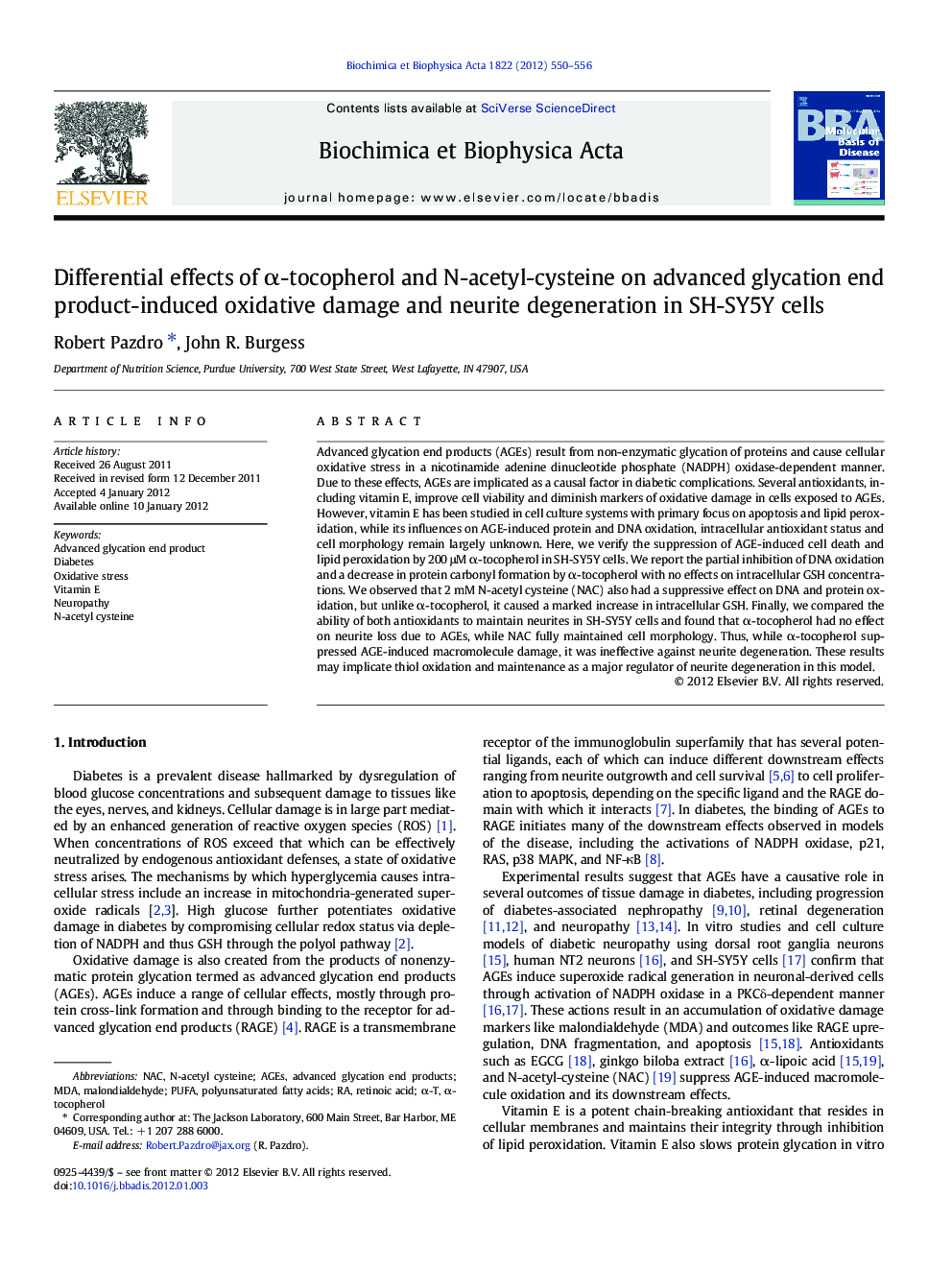| Article ID | Journal | Published Year | Pages | File Type |
|---|---|---|---|---|
| 1904952 | Biochimica et Biophysica Acta (BBA) - Molecular Basis of Disease | 2012 | 7 Pages |
Advanced glycation end products (AGEs) result from non-enzymatic glycation of proteins and cause cellular oxidative stress in a nicotinamide adenine dinucleotide phosphate (NADPH) oxidase-dependent manner. Due to these effects, AGEs are implicated as a causal factor in diabetic complications. Several antioxidants, including vitamin E, improve cell viability and diminish markers of oxidative damage in cells exposed to AGEs. However, vitamin E has been studied in cell culture systems with primary focus on apoptosis and lipid peroxidation, while its influences on AGE-induced protein and DNA oxidation, intracellular antioxidant status and cell morphology remain largely unknown. Here, we verify the suppression of AGE-induced cell death and lipid peroxidation by 200 μM α-tocopherol in SH-SY5Y cells. We report the partial inhibition of DNA oxidation and a decrease in protein carbonyl formation by α-tocopherol with no effects on intracellular GSH concentrations. We observed that 2 mM N-acetyl cysteine (NAC) also had a suppressive effect on DNA and protein oxidation, but unlike α-tocopherol, it caused a marked increase in intracellular GSH. Finally, we compared the ability of both antioxidants to maintain neurites in SH-SY5Y cells and found that α-tocopherol had no effect on neurite loss due to AGEs, while NAC fully maintained cell morphology. Thus, while α-tocopherol suppressed AGE-induced macromolecule damage, it was ineffective against neurite degeneration. These results may implicate thiol oxidation and maintenance as a major regulator of neurite degeneration in this model.
►Vitamin E protects neuronal cells against macromolecule damage induced by AGEs. ►Vitamin E has no effect on maintenance of intracellular reduced-state glutathione. ►Thiol NAC prevents AGE-induced neurite degeneration, but vitamin E has no effect. ►Thiol maintenance is a mechanism most associated with protection of neurites.
